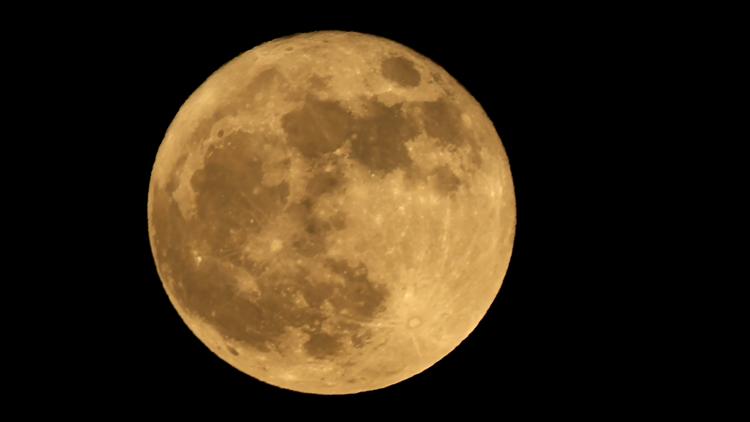This year’s summer solstice comes with a treat: the first full moon of the summer, coined the strawberry moon.


WASHINGTON — The first full moon of the summer season will rise on Friday evening, giving stargazers a sweet glimpse of June's strawberry moon.
But don't be fooled by its name. The moon won't appear pink or red in color as it rises above the horizon on Friday night.
The full moon will reach peak illumination at around 9 p.m. Eastern Time on June 21 and will appear full for about three days, from Thursday evening through Sunday morning, according to NASA.
June's full moon arrives just a day after the summer solstice, marking the first astronomical day of the summer in the Northern Hemisphere.
Why is it called a strawberry moon?
Each full moon has a set of nicknames, popularized by farmer's almanacs and connected to the seasons when they take place.
NASA says such almanacs attribute the June "strawberry moon" to the Algonquin tribes of what is now the northeastern U.S. The name refers to the short strawberry harvesting season in the region.
NASA says this month's full moon has another "sweet" name from an old European tradition: The Mead or Honey Moon. Mead is a fermented drink made with honey, and the name could come from summer honey harvests.
"The tradition of calling the first month of marriage the 'honeymoon' may be tied to this full moon because of the custom of marrying in June or because the 'Honey Moon' is the 'sweetest' Moon of the year," NASA's website says.
Why is the moon so big tonight?
The strawberry moon comes on the heels of the summer solstice, the longest day of the year. It's also when the sun appears highest in the sky.
Thanks to this alignment, the full moon will appear low, according to the Old Farmer's Almanac.
In fact, NASA says it will be the lowest full moon of the calendar year. It's low position in the sky gives the moon a larger appearance, a term known as the "Moon Illusion."
How often does a full moon happen?
The most common answer to this question is 28 days, but that's not actually correct. A full moon happens roughly every 29.5 days.
Technically, it takes 27.3 days for the moon to complete an orbit around the earth. But because both are spinning around the sun, the moon has changed position enough that the sun hits it at a different angle on day 27 than day 0. It takes another two days for the sun's light to hit the moon exactly like it did on day 0.
Usually, this means there's one full moon every month. But occasionally, the timing can work out so that there's a full moon at the beginning of the month and one at the end. That second full moon is known as a blue moon.
TEGNA Digital contributed to this report.
.png)









 English (US) ·
English (US) ·